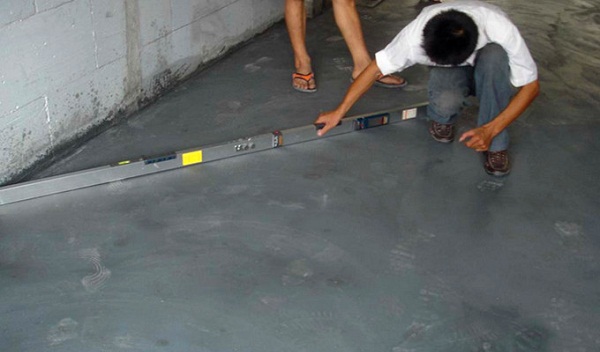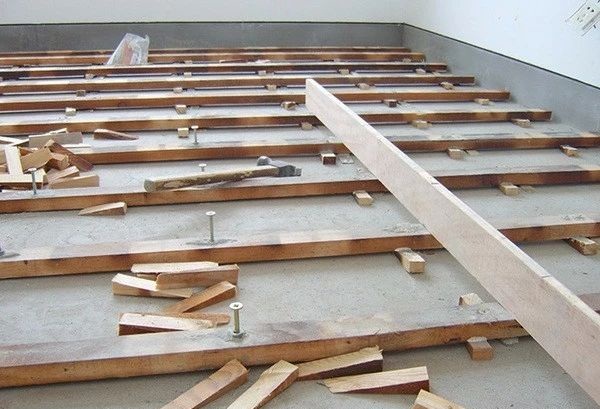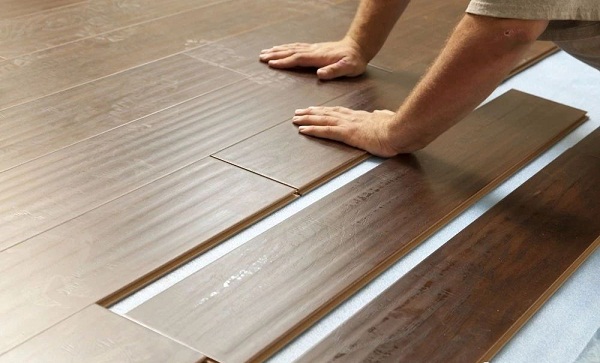

- 0086 13321818576 (Steven Lee)
- info@3c-floor.com
01. Uneven ground
When the floor is installed, it will ring on the top and the distribution area will be small. This noise may be caused by the ground not meeting the requirements. Check the flatness of the ground before installing the wooden floor. Non-standard ground should be leveled.

02. Higher wood keel moisture content
In some areas, wood keels are not dried and stacked in the open air, resulting in a large difference in the moisture content of the wood keels of the same batch. In the same batch of wood keel, some moisture content is about 10%, and some are as high as 25% or more. Even if the installer finds the wooden keel to be flat, the floor may not ring for a while after installation. In the course of use, the moisture content of the wooden keel is rebalanced, and unevenness will appear. Walking on the floor will produce a loud noise.

03. Floor notch tight and floor nails too tight
The tightness of the floor notch causes friction between each other and generates audible noise; Solution: Remove all the sound parts and re-install the notches. The problem can be solved or replaced. Fix the floor nails too tightly; Solution: Remove all the sound parts, and adjust the floor nails to fit tightly. Reinstall the equipment. The problem can be solved.
04. Insufficient connection between wooden floor and keel
The normal contact of the wooden floor with the keel, it should be a plane contact, but due to the insufficient number of nails, the nail connection at the board surface and the keel tightly contact, and the non-nail pressure place is false in the keel, resulting in uneven force. Therefore, when a person applies pressure on a wooden floor, slight movement is caused, causing a sound.
05. Insufficient floor gap
Everyone knows that the installation of wooden floor is enough to reserve gaps, otherwise the solid wood floor expansion process produces a slight arch that is difficult to observe with the naked eye, so that there is already a gap between the solid wood floor and the keel, so when walking Shaking up and down the solid wood floor will produce a sound of friction. The occurrence of this kind of noise is also very common, so it is necessary to reserve enough gaps during installation. If this happens, do not rush to refurbish the reloading. Generally, you can first look at the dampness of solid wood flooring. The effect is that if the solid wood floor is seriously deformed after being exposed to moisture, the tightly pressed state of the solid wood floor will no longer make a sound.

06. Moisture-proof film did not pad up
Walking around the floor while installing, you will feel a loud noise. It may be a special tide on the ground. The moisture-proof membrane is not sealed or the indoor air humidity is above 80%. Therefore, the moisture protection of the ground should be done well. The damp ground should be covered with a layer of plastic film on the ground to eliminate the influence of the humidity on the floor.
07. Symmetrically placed weights cause floor arch deformation
Pressing the floor can not be expanded to both sides, resulting in the floor arching or the lack of reserved space when installing the floor leads to the arching of the floor. When people move, the floor vibrates up and down, and the mouth friction produces a sound.
08. Uninhabited or unoccupied for a long time
After the floor is installed, no one lives or is left unoccupied for a long period of time. The indoor air does not circulate, or the floor water enters the water, causing the humidity to be too high or too low. Floor noise, deformation, partial cracking, swelling arching, shrinkage from the seam, etc. may occur. phenomenon. (The different phenomena that occur will depend on the specific circumstances, and the concrete conditions will be solved.)
09. Maintenence reasons
The use of products that are not suitable for floor care or floor wax, wood oils, or improper care methods during nursing can produce loud sounds. (This article is currently one that cannot be clearly explained. The method can refer to the first case measure).
09. Local sound common problems
Normal phenomenon during the period of the heel; after the arrival of the two - within four months will naturally disappear. Generally, noise will be generated at obstacles such as entrances, walls, etc. Floors and door covers will not leave enough expansion joints and the last floor will not be securely fixed. Floors and door covers will rub against each other to generate noises. Solution: Leave expansion joints and Reinforce the floor, the problem can be solved. Foreign matter enters the floor expansion joint. Other types of work are not properly connected with the floor, and friction produces noise.